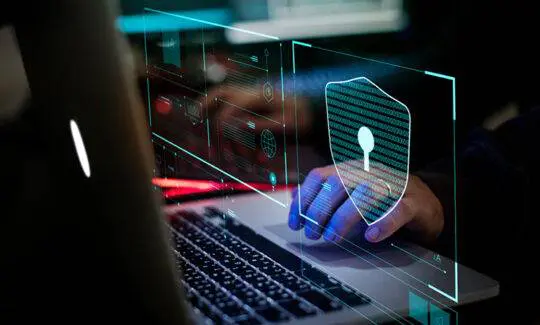Guardians of Your Network: How a SOC Service Delivers 24/7 Security Vigilance
As cyber-attacks have continued to grow in their sophistication, threat-hunting methods have also had to grow and evolve alongside them – particularly within Security Operations Centres (SOCs).
We’re going to trace the progression of threat hunting as a cybersecurity practice from its more reactive inception, through to the analytics-based, predictive, and proactive techniques that are employed today in the most advanced SOC services.
We’ll also examine the key global technological jumps that have allowed threat hunting to grow at an exponential rate and become one of the cornerstones of modern cybersecurity. In the corporate sphere, any SOC service worth its weight should employ threat hunting in some capacity, and will often leverage it as a key component in the threat management process.
The Early Days: Reactive Security and the Birth of SOCs
In the early days of cybersecurity, the professional approach was predominantly reactive. Organisations would set up firewalls and antivirus software and respond to threats solely as they occurred.
The emergence of SOCs in the late 1990s marked a pivotal shift towards more proactive security measures. Initially, these centres were focused on monitoring networks for known threats and managing incident response – a necessary, but somewhat limited, approach.
SOCs were developed as a centralised solution that could leverage the most advanced technology available at the time, and these were paired with cybersecurity experts in an attempt to neutralise the growing threat of complex cyber-attacks.
The 2000s: The Rise of Proactive Security Measures
As cyber threats advanced in the 2000s, the limitations of reactive security became increasingly apparent. This period saw the beginning of what we now recognise as threat hunting – the proactive search for malicious actors or vulnerabilities in a system before they cause harm. Early threat hunting was manual and time-intensive and relied heavily on the expertise and intuition of security analysts.
This significant strategic shift paved the way for an entire industry based around a more preventative approach to cyber security. The potential to be proactive as opposed to reactive was extremely appealing to organisations looking to minimise data breaches in the most cost-effective way possible.
Integration of Technology: Advancing Threat Hunting Capabilities
The integration of technology marked the next significant phase in the evolution of threat hunting within SOCs. Security Information and Event Management (SIEM) systems began to be developed and were integrated with SOC services to vastly increase the data aggregation and analysis processes available to cybersecurity teams.
With this technology, SOCs now could begin detecting patterns from vast amounts of data being fed into them. This led to potential threats being identified ahead of time, further advancing the proactive nature of SOC services by making the process significantly more efficient.
The Era of Sophistication: AI and Machine Learning
Artificial intelligence (AI) has had a profound effect on the world in recent years, but its impact on the cybersecurity industry has already been transformative. Introducing advanced machine learning capabilities has enabled SOCs to process massive amounts of data at speeds that were previously unachievable.
The use of AI technology has increased the efficiency of SOCs that utilise it. With data analyses, bespoke AI algorithms can identify patterns that may have previously gone undetected by more primitive approaches. This has led to more predictive analyses that can allow for an increasingly proactive approach to stopping cyber attacks.
Leveraging these technologies also decreases the load on SOC employees, releasing them to focus more on threats and incident responses instead of spending time manually analysing data and searching for known patterns. This empowers cyber security teams to stay ahead of evolving threats while also easing the overall burden placed on them in an already high-pressure environment.
Behavioural Analytics: Understanding the Adversary
Another milestone in the development of threat hunting was the integration of advanced behavioural analytics into standard SOC processes. By understanding the normal behaviour of users and network traffic, SOCs can now more accurately identify deviations that may indicate a threat. This approach has proven particularly effective against advanced persistent threats (APTs) and insider threats, which traditional security measures might overlook. This combination of both traditional quantitative and more nuanced qualitative analysis has driven significant advancements for many SOC services.
Threat Intelligence: A Collaborative Approach
The evolution of threat hunting has also been influenced by the growing emphasis on threat intelligence – the sharing of information about threats and vulnerabilities. This collaborative approach has allowed SOCs to benefit from a wider pool of data and insights, improving their ability to predict and prepare for potential attacks. Greater collaboration promotes an exceptionally proactive approach, allowing for the development of robust preemptive measures. This reduces the amount of incidents and attacks, lessening the potential impact of a breach.
Looking Ahead: The Future of Threat Hunting in SOCs
Threat hunting now acts as one of the cornerstones of modern SOC services, and it continues to evolve in line with other rapidly growing technologies. Further advancements – particularly in the fields of AI and machine learning – are likely to lead to even more capabilities being discovered. Predictive analysis will likely become quicker and cheaper as analysing vast amounts of data becomes more cost-efficient. Blockchain technology also has the potential to be transformative when it comes to data integrity. Finally, expect to see SOCs leveraging quantum computing to significantly accelerate the detection of increasingly complex threats, further enhancing the resilience of SOC systems.
The evolution of threat hunting within SOCs largely mirrors the general advancements we’ve seen across cybersecurity as an industry. It’s a field that requires constant adaptation to keep up with the speed of new and more advanced threats. DigitalXRAID continues to be at the forefront of this shifting digital landscape. We pioneer an innovative and forward-thinking suite of bespoke managed SOC services that gives our clients peace of mind that their digital footprint is always secure, and stays one step ahead of potential threats at all times.

